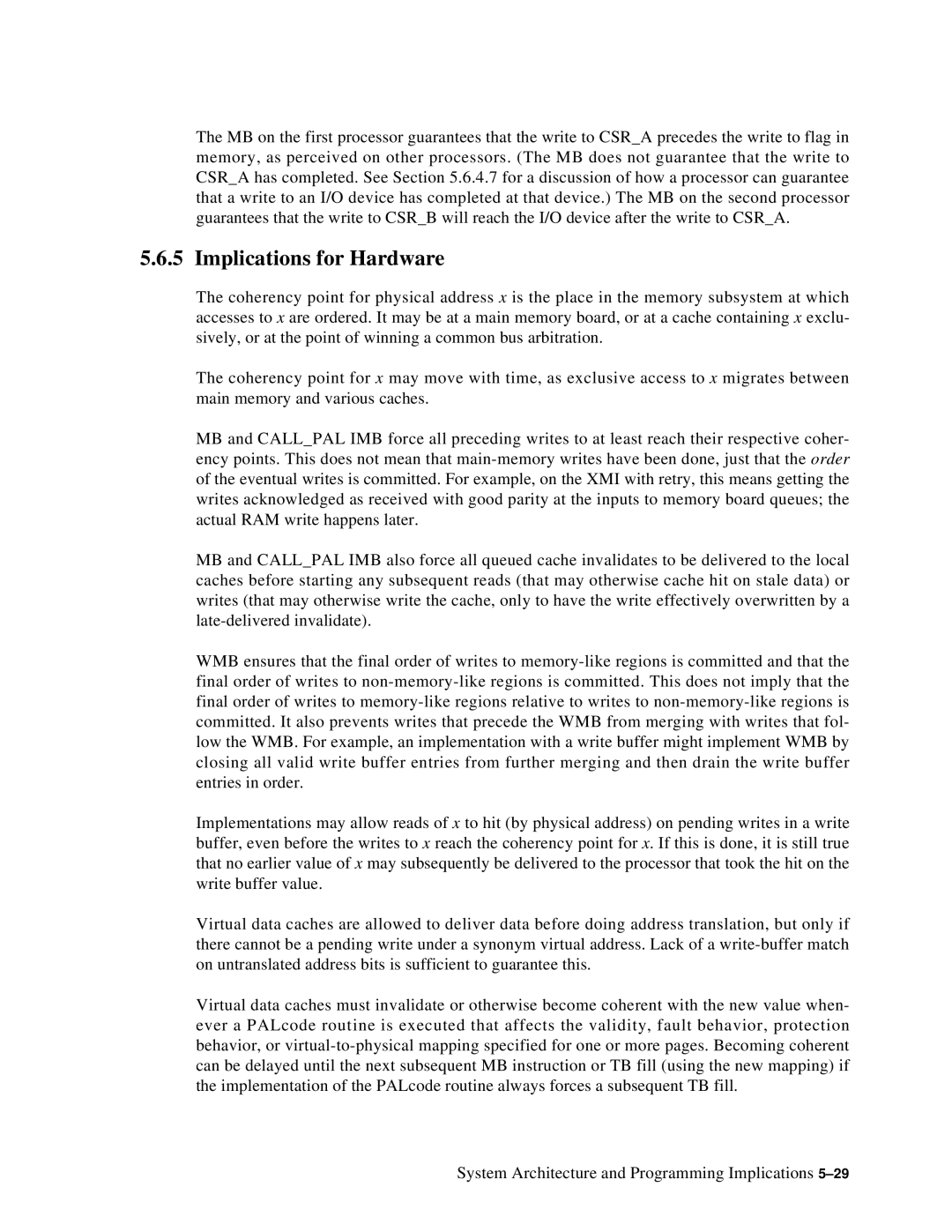The MB on the first processor guarantees that the write to CSR_A precedes the write to flag in memory, as perceived on other processors. (The MB does not guarantee that the write to CSR_A has completed. See Section 5.6.4.7 for a discussion of how a processor can guarantee that a write to an I/O device has completed at that device.) The MB on the second processor guarantees that the write to CSR_B will reach the I/O device after the write to CSR_A.
5.6.5 Implications for Hardware
The coherency point for physical address x is the place in the memory subsystem at which accesses to x are ordered. It may be at a main memory board, or at a cache containing x exclu- sively, or at the point of winning a common bus arbitration.
The coherency point for x may move with time, as exclusive access to x migrates between main memory and various caches.
MB and CALL_PAL IMB force all preceding writes to at least reach their respective coher- ency points. This does not mean that
MB and CALL_PAL IMB also force all queued cache invalidates to be delivered to the local caches before starting any subsequent reads (that may otherwise cache hit on stale data) or writes (that may otherwise write the cache, only to have the write effectively overwritten by a
WMB ensures that the final order of writes to
Implementations may allow reads of x to hit (by physical address) on pending writes in a write buffer, even before the writes to x reach the coherency point for x. If this is done, it is still true that no earlier value of x may subsequently be delivered to the processor that took the hit on the write buffer value.
Virtual data caches are allowed to deliver data before doing address translation, but only if there cannot be a pending write under a synonym virtual address. Lack of a
Virtual data caches must invalidate or otherwise become coherent with the new value when- ever a PALcode routine is executed that affects the validity, fault behavior, protection behavior, or
System Architecture and Programming Implications
